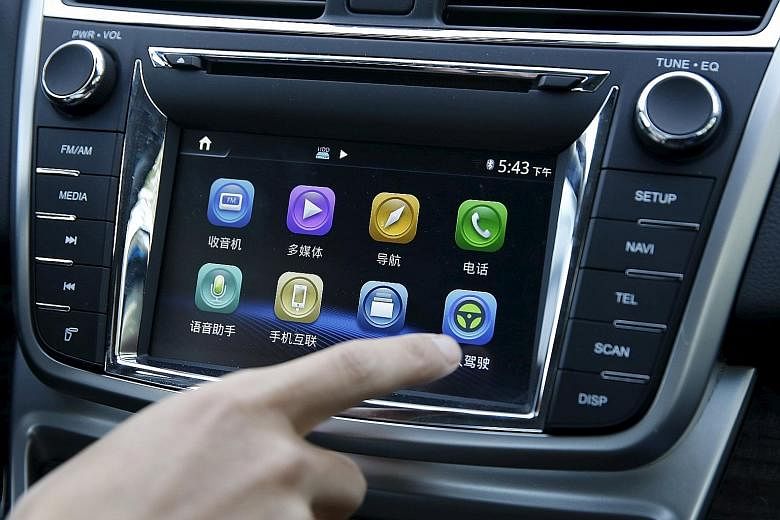BEIJING • In the race to develop self-driving cars, the US and Europe may lead in technology, but China is coming up fast in the outside lane with a regulatory structure that could put it ahead in the popular adoption of autonomous cars on highways and city streets.
A draft road map for having highway-ready, self-driving cars within three to five years and autonomous vehicles for urban driving by 2025 could be unveiled as early as this year, said automotive engineering professor Li Keqiang at Tsinghua University who chairs the committee drafting the plan. The panel is backed by the Ministry of Industry and Information Technology.
The draft will set out technical standards, including a common language for cars to communicate with each other and infrastructure, and regulatory guidelines - a unified framework that contrasts with a patchwork of state laws and standards in the United States.
Without coordination, that patchwork could hold back the development of self-driving cars in the US, Mr David Strickland, a former safety chief for the National Highway Traffic Safety Administration, said at an event in Beijing this month.
China's top-down approach could see it overtake the US and Europe, where automakers have generally been left to agree among themselves on industry standards.
A push for self-driving and electric cars also fits with Beijing's shift to an economy driven by high technology and consumer industries rather than heavy industry and low-end manufacturing.
"If we can convince the government that every company, every car on the road must use this (single standard)... then there is a chance China can beat the rest of the world" in the use of self-driving cars, said Mr Li Yusheng, head of Chongqing Changan Automobile's autonomous drive programme.
China is ripe for the advent of self-driving cars. It is the world's biggest vehicle market and also blighted by air pollution, traffic congestion and often erratic driving.
More than 200,000 people die each year in road accidents, World Health Organisation data shows.
As relative newcomers to mass car ownership, Chinese also tend not to share the West's love affair with driving.
In a 2015 World Economic Forum survey, 75 per cent of Chinese said they would likely ride in a self-driving car, versus half of Americans.
Within 20 years, China will be the largest market for autonomous features, accounting for at least a quarter of global demand, says Boston Consulting Group.
The China draft would be opened up for industry comment and input from a range of ministries, ultimately going to the State Council, or Cabinet, for approval.
At a most basic level, the committee will define a "self-driving" car and set a minimum level of functionality, said Professor Bai Jie of the School of Automative Studies at Tongji University.
China's timeline would put it at least in line with, if not ahead, of others developing self-driving cars.
By 2020, Japan's Toyota Motor aims to market a car that can drive by itself on highways. Chinese automakers including SAIC Motor and Ford Motor's local partner Changan Automobile have internal targets that also match the likely draft road map, Prof Li said.
REUTERS

